Bendigo - Celebrate Vahland Heritage Driving Tour (West)

Follow the hills where the mining magnates built, through the gullies where the miners' lived, down to the alluvial flats of the first rushes.
Driving Time: 2 hours
Distance: 65 kilometres
Gold was first discovered at Ravenswood Run in 1851 and miners came north to rush the Bendigo Creek. Miners created settlements overnight, but as the gold economy boomed a wealthier class of speculators emerged.
William Charles Vahland arrived in Sandhurst, as Bendigo was then known, Hannover in 1854. A young man of 26, Vahland had no luck finding gold but soon put his architectural training into practice and opened his first business in Sandhurst.
Celebrate Vahland Heritage Tour (West) Map
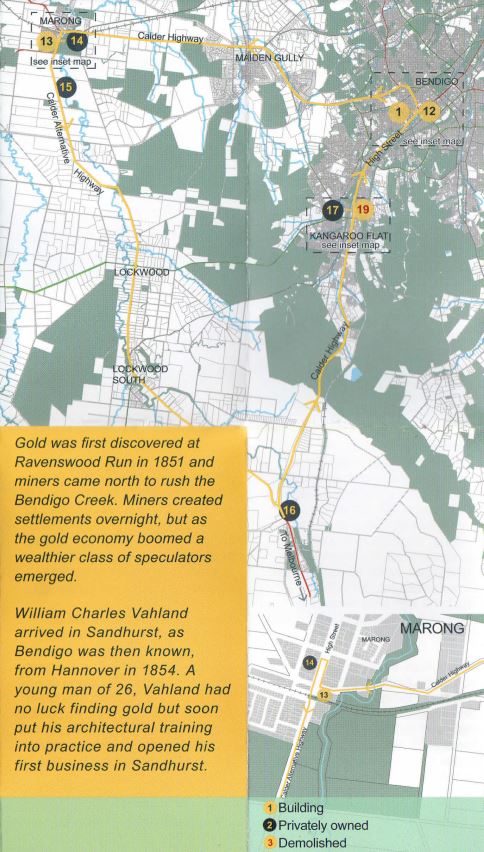
The first discovery of gold on the Bendigo goldfield was in 1851 at 'Ravenswood Run'. The homestead was built for the pastoralist Frederick Fenton. Vahland designed the outbuildings (1870) that are now part of the estate (1).
Miners rushed the Bendigo Creek, living in tents or huts made of mud, timber and stone. As people settled, timber buildings replaced tents and communities looked to the future and began building out of brick. The German Common School (1866) was a small school designed for the German settlers in Ironbark, now part of the Violet Street Primary School (8).
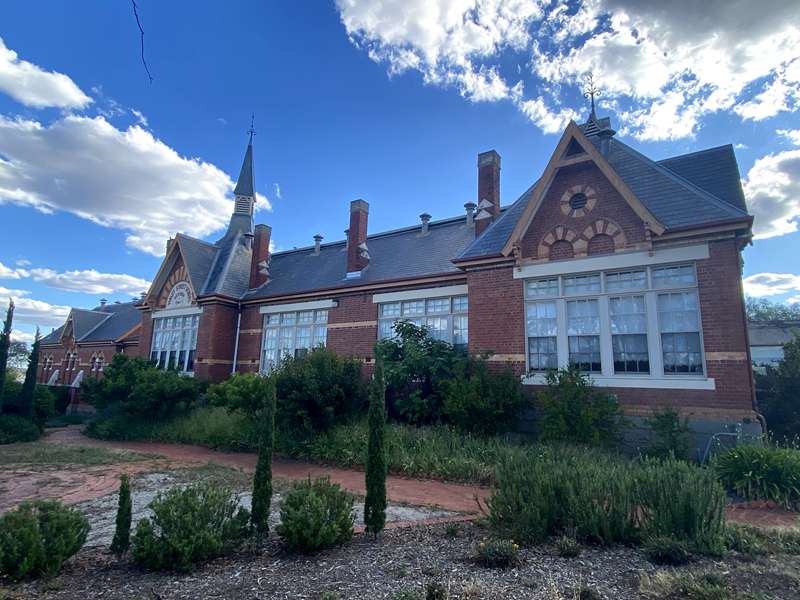
Another Common School (1870) built in Kangaroo Flat had 130 children enrolled within a fortnight of opening (18).
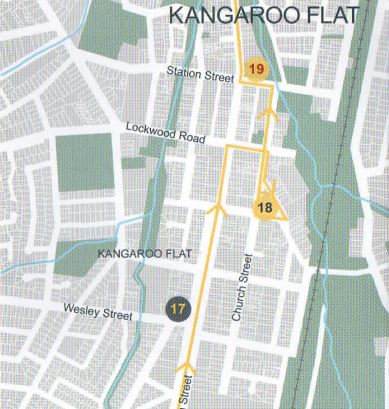
Churches were the heart of these migrant communities. The Catholic Saint Monica's Church (1864, demolished 1992) in Kangaroo Flat served as a church on the weekend and a school during the week (19). The Holy Trinity Anglican Church (1878) served the Church of England congregation in Marong for over a century (14). The organ loft of the older Methodist Church in Golden Square was redesigned by Vahland (additions 1885) (5).

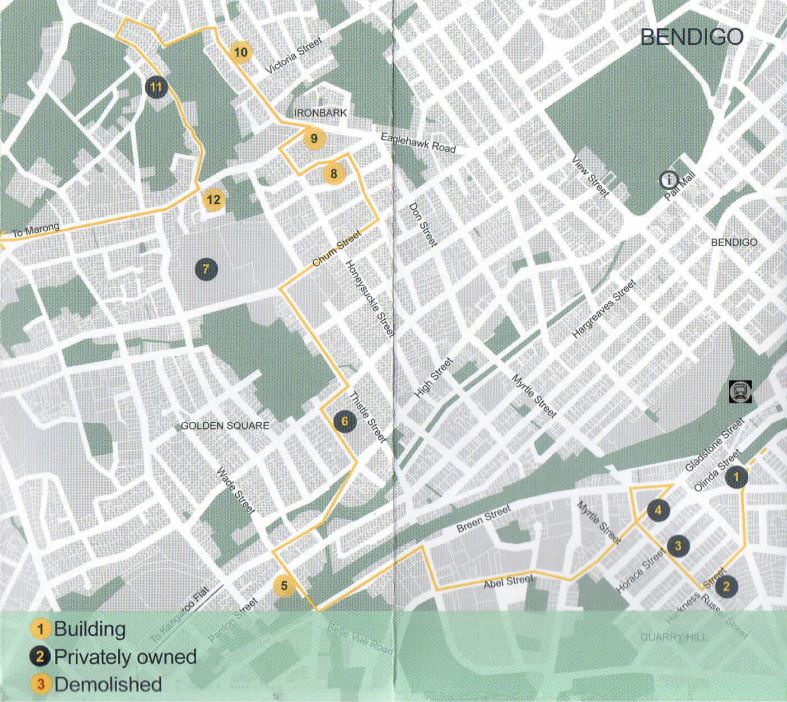
There were as many hotels as churches on the goldfields. The British and American Hotel (1890) in Ironbark continues to function as a hotel (10).
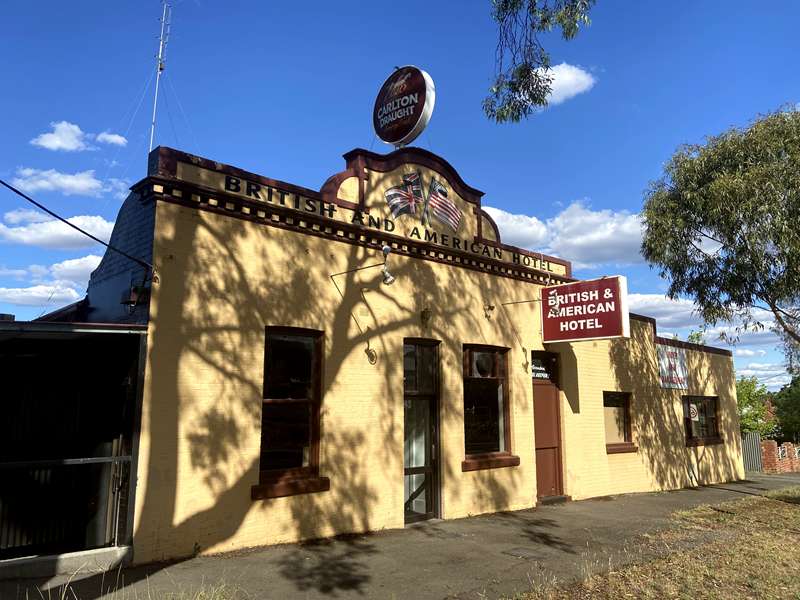
The Quartz Miner's Arms Hotel (1895, second storey removed 1944) has a chequered past (9). Originally two storeys, the Quartz Miner's Arms operated as a hotel for many years. It was bought by the Methodists and converted into a church. At the end of WWII the second storey was removed. Today it is once again a church for the Greek Orthodox congregation.

The most elegant hotel that Vahland designed was the Goldmines Hotel (1872) in Golden Square (12). The fine verandah has recently been restored.

Some men were highly successful at speculating on the gold economy. These gentlemen built on the top of the quartz reefs that made them wealthy. The 'Quartz King' George Lansell lived in his 'Fortuna Villa' on the top of the New Chum reef in Golden Square (7) Originally built in 1858, George Lansell made constant additions to his villa (1869-88) inspired by his overseas travels.
Other villas of the rich and prestigious include some Quarry Hill places thought to be Vahland designs. 'Del Oro', or 'golden', (1892) was the home built for company director George Crawford (1). 'Penwinnick' (1895) was built for John Robert Hoskins, a well known advocate for temperance and twice Mayor of Sandhurst (2). Vahland may have made additions to an older building, 'Heidelberg' house (additions 1885) for Thomas Falkingham, while 'Rydon' (c.1862-92) was designed for William Stephens with wide sweeping views of Bendigo from the balcony (3) (4).
William Rae, a quartz reefer, made his fortune from Victoria Reef which was located near his house 'Bon Accord' (additions 1872, destroyed by fire in 2009) in West Bendigo (11). William Brown, a draper, had an unusual cantilever balcony added to the older 'Bessbrook' villa (additions 1876) in Golden Square (6).

Thomas Glover, onetime Chairman of the Marong District Roads Board, had an opulent residence designed by Vahland, 'Park View' (c.1870-85) in Marong (15). The grand `Millewa Hall' (1872) in Kangaroo Flat can still be seen set amongst a spacious landscaped garden (17).
When the seat of the Shire of Marong was moved in the early 1900s, it was Vahland who was commissioned to design the new Shire Hall (1908) (13). It was one of Vahland's last designs. The Shire Hall is a distinguished civic building that continued to serve its purpose until the Shire was amalgamated into the City of Greater Bendigo in 1994.
(5) These buildings are privately owned. Please only view from the public domain.
(33) These buildings have been demolished
Explore other areas of Greater Bendigo with these brochures: - City Centre, Bendigo Views, East, Eaglehawk, West Bendigo.
This brochure is available from the Bendigo Visitor Information Centre.
Location
79 Olinda Street, Quarry Hill 3550 View Map








